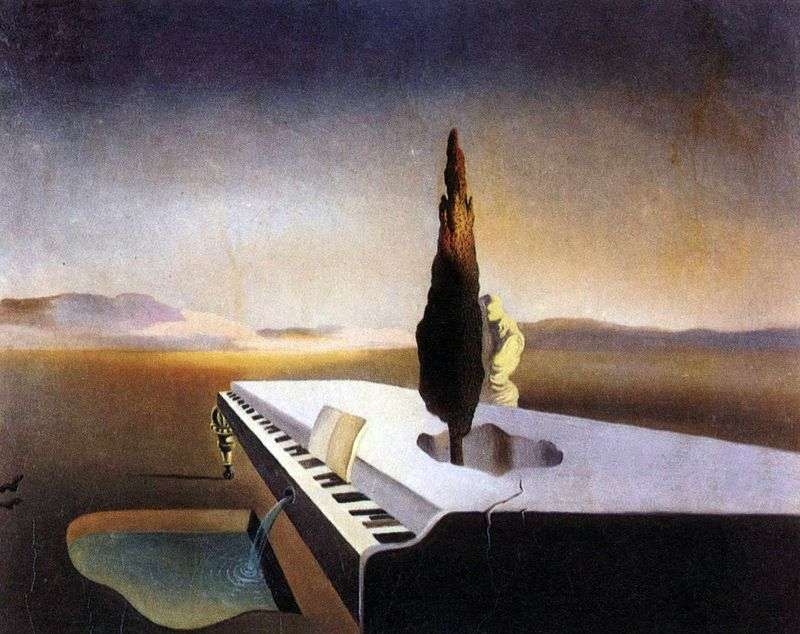
Desert and hills on the horizon. Soft sunset light. In the center of the canvas is a grand piano, pierced through with a slender cypress tree. The keyboard is open, there is a note notebook on the keys. The top of the cypress gilds in the sunlight. At the piano one can see an antique sculpture half hidden by a tree. On the ground you can see a small depression-a pool in the form of a piano lid. From under the keys of the instrument, as from a drainpipe, water flows into it. Cypress appears in many of Dali’s paintings.
For the artist, cypresses symbolized the count of the passage of time: in childhood he liked to observe from the window how the sun’s rays move along them and how the shadows cast by them change. Repeatedly exposed to the viewer piano under the open sky – also a memory, coming from childhood. Dali mentioned in his notes that neighbors, with whom his parents were friends, sometimes arranged concerts on the street. For this, the musical instrument was taken out of the house into the yard. The name of the picture, of course, was invented to shock the viewer and take hold of his attention.
What is the “necrophilia” of the source? Deepening in the earth is the allegory of the grave, burial. The flow of water, lovingly rushing into this niche, thus becomes necrophilic. The objects collected in the picture – sculpture, cypress, piano, – symbols of all who have retired to the past, departing, deceased.
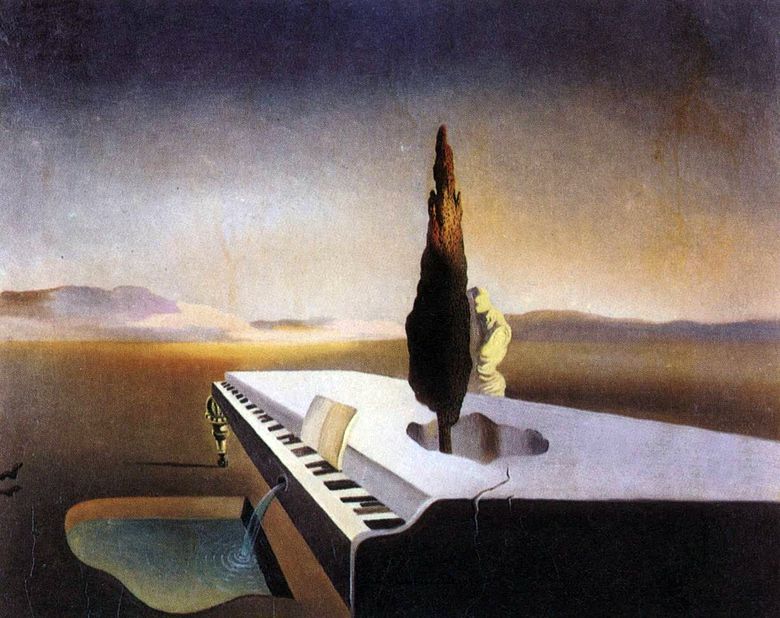 Source nécrophile partitionnée au piano sur le code – Salvador Dali
Source nécrophile partitionnée au piano sur le code – Salvador Dali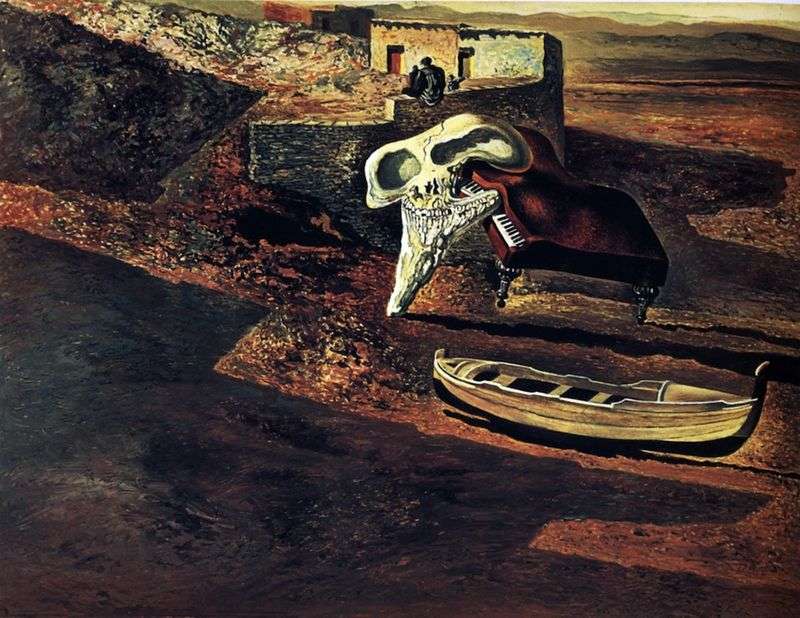 The evaporated skull sodomizes the piano on the code by Salvador Dali
The evaporated skull sodomizes the piano on the code by Salvador Dali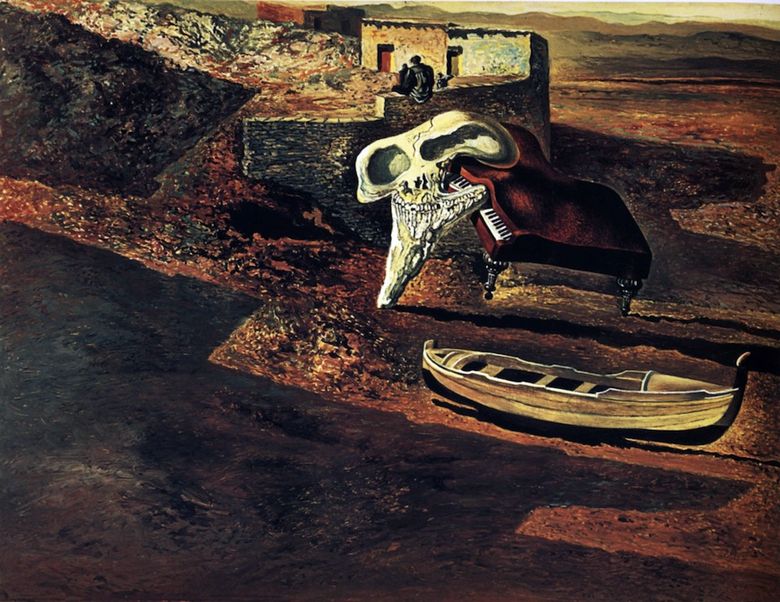 Le crâne évaporé sodomise le piano sur le code – Salvador Dali
Le crâne évaporé sodomise le piano sur le code – Salvador Dali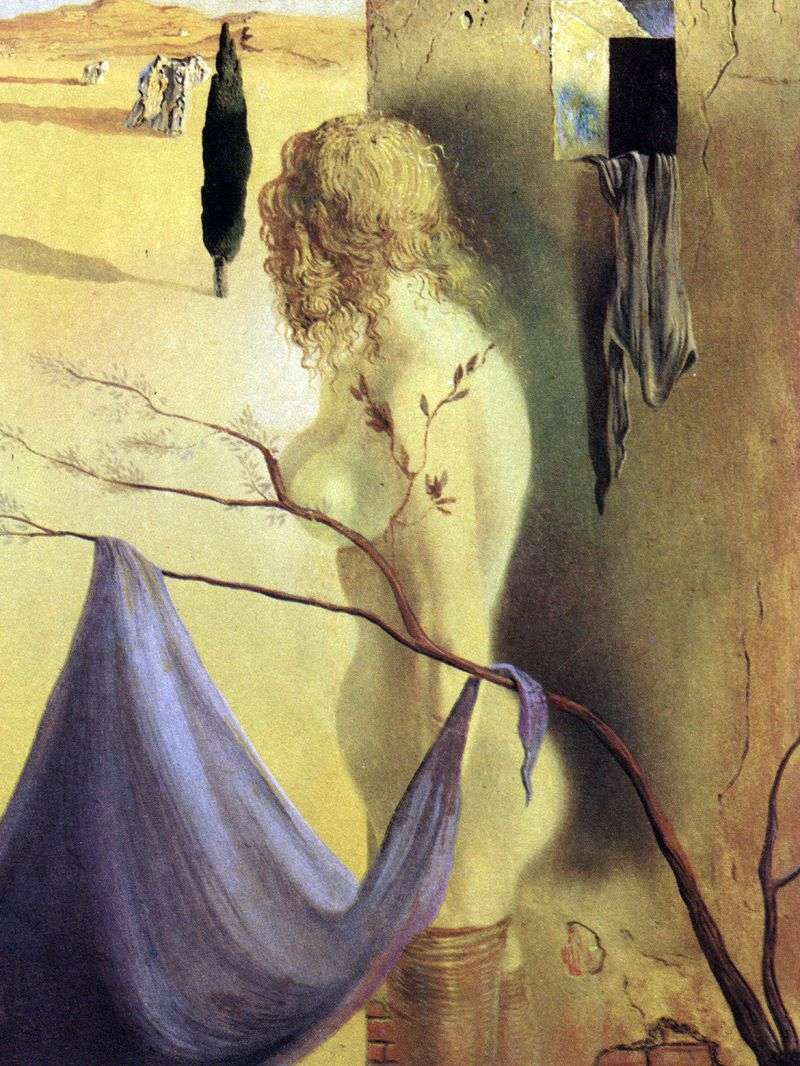 Anxious sign by Salvador Dali
Anxious sign by Salvador Dali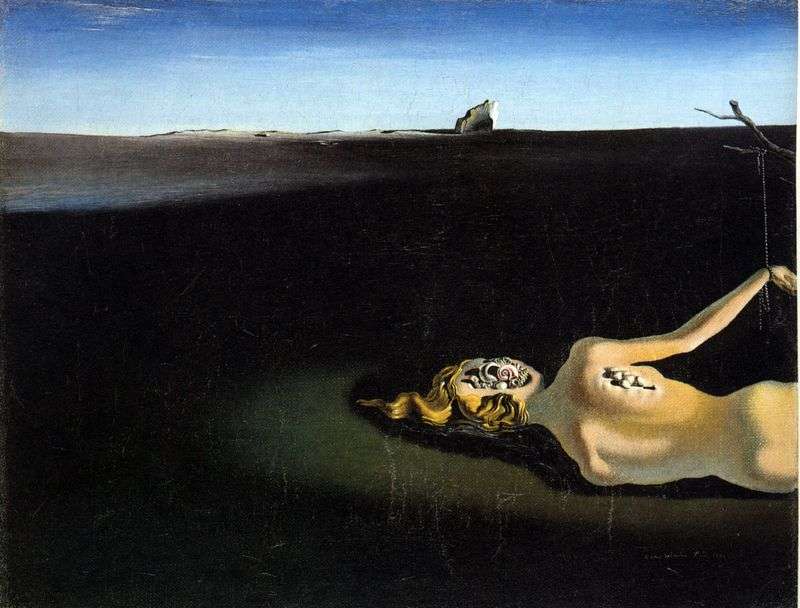 A sleeping woman in the background of a landscape by Salvador Dali
A sleeping woman in the background of a landscape by Salvador Dali Dali, turning his back, writes a portrait of Gala by Salvador Dali
Dali, turning his back, writes a portrait of Gala by Salvador Dali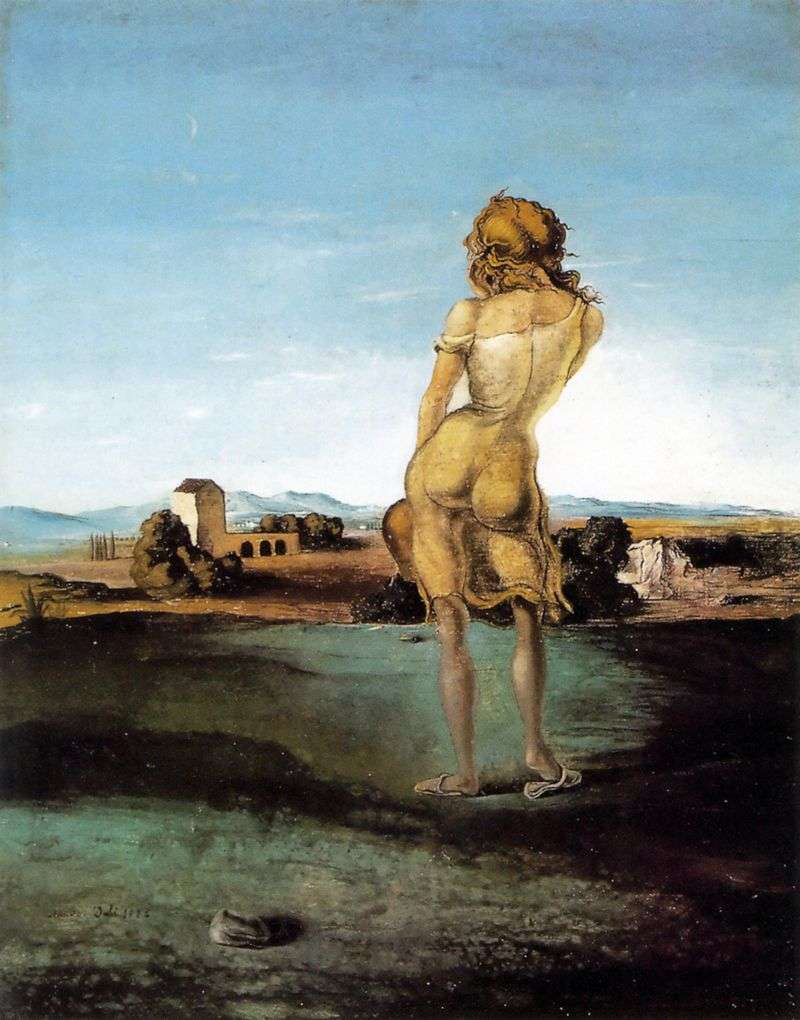 A girl from Ampurdan by Salvador Dali
A girl from Ampurdan by Salvador Dali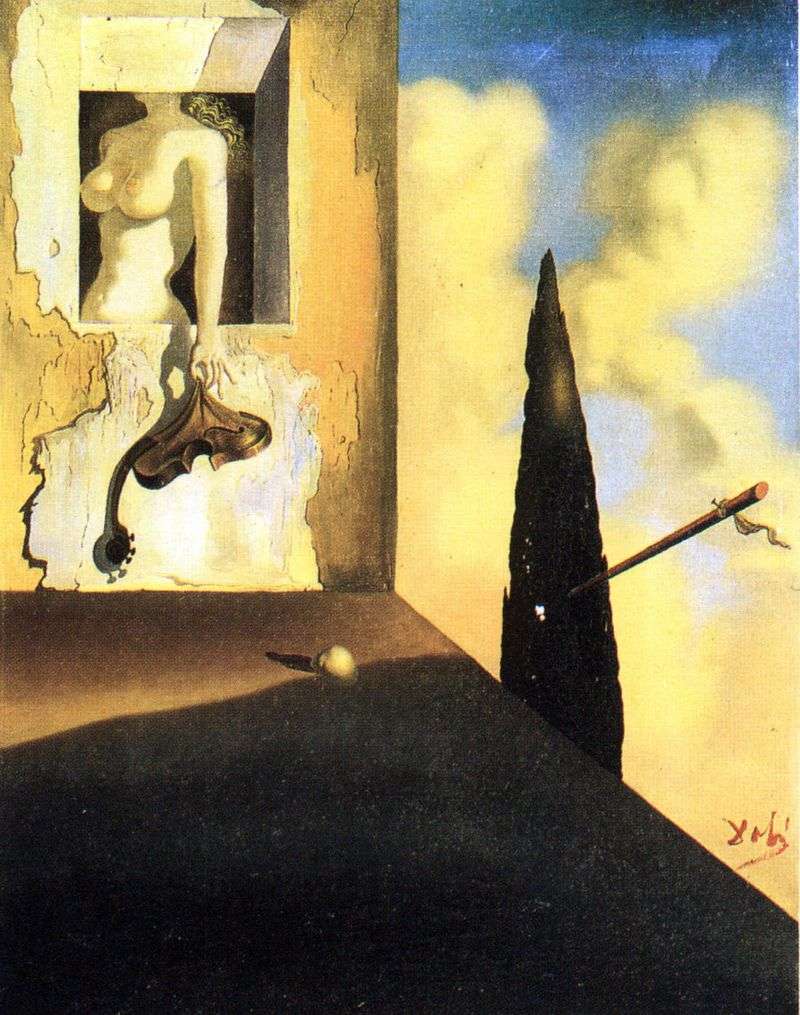 Masochistic tool by Salvador Dali
Masochistic tool by Salvador Dali